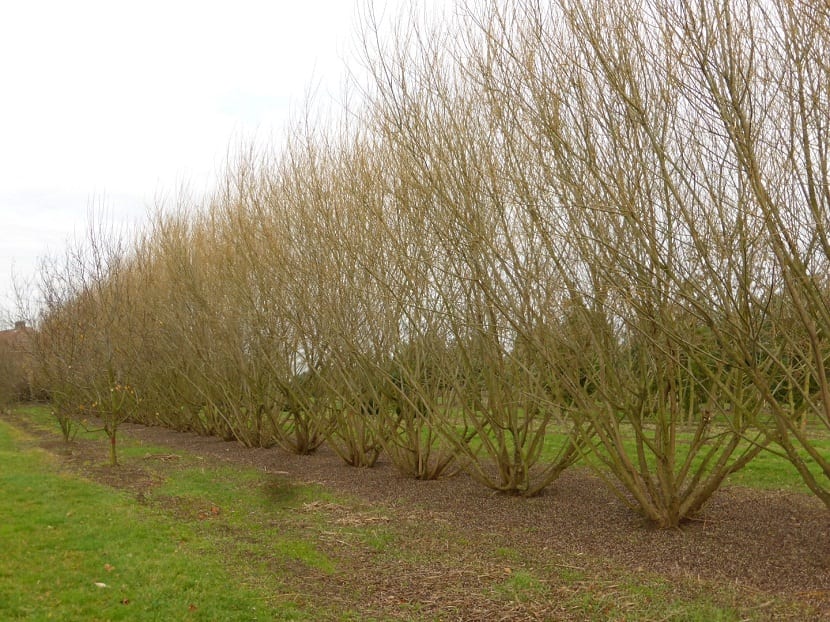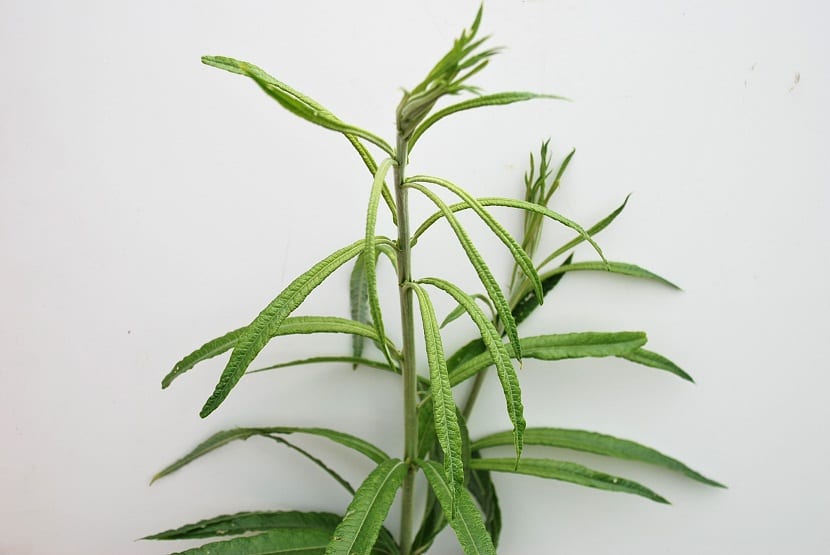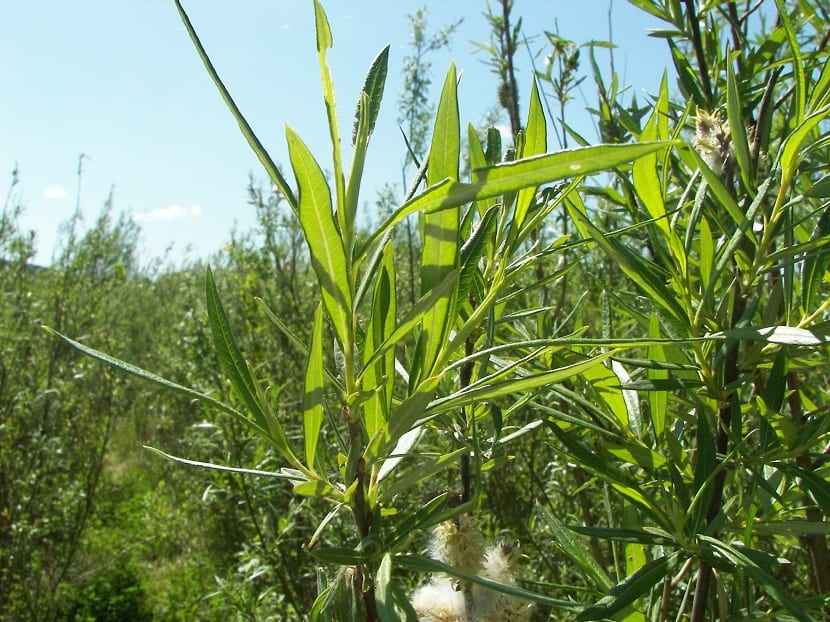
El Salix viminalis It is a tree native to Europe and Western Asia, commonly known as wicker. It is a fast growing species that has an abundant root system that allows a rapid consolidation of the substrate.
It easily exceeds ten meters in height and in the wild it is frequently hybridized with other species of willows, which sometimes makes it difficult to recognition and classification of the resulting specimens.
Salix viminalis characteristics

El Salix viminalis It is an erect and dioecious tree with a tussock character that is not very long-lived. Its branches at the beginning appear somewhat brownish and hairy and later become softer. Deciduous leaves that are attached to the stem by short petiolesThey are linear and toothed in the apical part, 15 cm in length, folded at their edges, green in the bundle and whitish and hairy on the underside.
The fluorescence occurs between March and April and its flowers are similar to curved spikes, having different characteristics depending on the sex. The males are longer and have smooth stamens and yellow anthers, while the female ones are cylindrical and pedunculated in appearance.
Pollination is anemophilic, that is, with the intervention of the wind. As with most of its genre, pollen is allergenic. Beekeepers benefit from this plant because its pollen and nectar production help strengthen bee swarms. Its fruit is oval in shape, which opens during the summer season to release its seeds that are pollinated by the wind.
planting and propagation
The multiplication of the wicker is produced by seed or cuttings. If you decide on propagation by seed you must sow it in late spring, when it is mature, being its viability so precarious that it can last a few days.
In relation to the mature wood cuttings, these should be in a protected outdoor bed between the months of December and February or if you wish, planted in their permanent position covered with a mantle that serves to eliminate weeds. However, if the cuttings are half-ripened wood, it is preferable to do it from June to August.
Grows well in almost all soils, including wet, poorly drained, or occasionally flooded. However, it is best if you plant it in moist, heavy soil and in full sun, so you should avoid dry soils and shade. It is a very resistant plant, tolerates wind and air pollution.
It is a useful species for making baskets, which is why it is widely cultivated. It is important to prune almost to the level of the surface and annually when its cultivation is destined to the production of baskets, since this promotes the production of long and flexible shoots. Under favorable conditions, Salix can develop up to 4 meters of new shoots when pruned properly.
As you know, it is a valuable source of pollen for bees. It is advised that you plant it in its permanent position as soon as possible. The development of its roots is very aggressive, so it can cause difficulties with drainage. Male and female plants must be grown if seeds are required.
Diseases and parasites

Salix viminalis is prone to attack by pests. This plant is a very important source of nutrients for the caterpillarsfurthermore, that is quite susceptible to fungal diseases.
Another pest that assiduously attacks the plant are the gallflies, commonly known as gill flies, which damage and deform the leaves. Likewise, aphids and lepidoptera represent a danger to the appearance and life of Salix because they can develop a massive infestation on its leaves. Other diseases caused by fungi are scabies and rust.
Uses
Has used in the production of garden furniture, dividers, baskets, mats and even cribs. Its branches are useful for the union of the vines. In the field, its use can be seen along the canals and along the banks of the rivers. In gardens they are used as tutors for climbing plants.
In Galicia they are also used to tie the branches of vines, trees, bundles of firewood and to make plugs...
Very interesting. Thanks.